Looking beyond the honeybee, there are thousands of fascinating native bees to explore and protect.?Most of these native bees live in nests in the ground?or in leaves and sticks, rather than in hives. Over 3,600 different bee species exist across the US, and they each have unique, critical roles to play in our ecosystems. Because these species evolved alongside our native plants, pollinating their flowers and helping form their fruits, our environmental longevity balances on the wings of these tiny but mighty invertebrates.
Today, many scientists and advocates are working on behalf of native bees and other key pollinators. At?The Xerces Society, a science-based nonprofit organization that protects wildlife through the conservation of invertebrates and their habitats, Matthew Shepherd leads efforts to educate about these vital species. Shepherd finds that while awareness of honeybees is high, there is less general knowledge about the diversity, lifestyles and habitat needs of our native bee species. Keep reading to catch the buzz on why native bees matter, why they’re in danger, what types of bees are out there, and what we can do to help all bees thrive in our communities.
Types of Bees
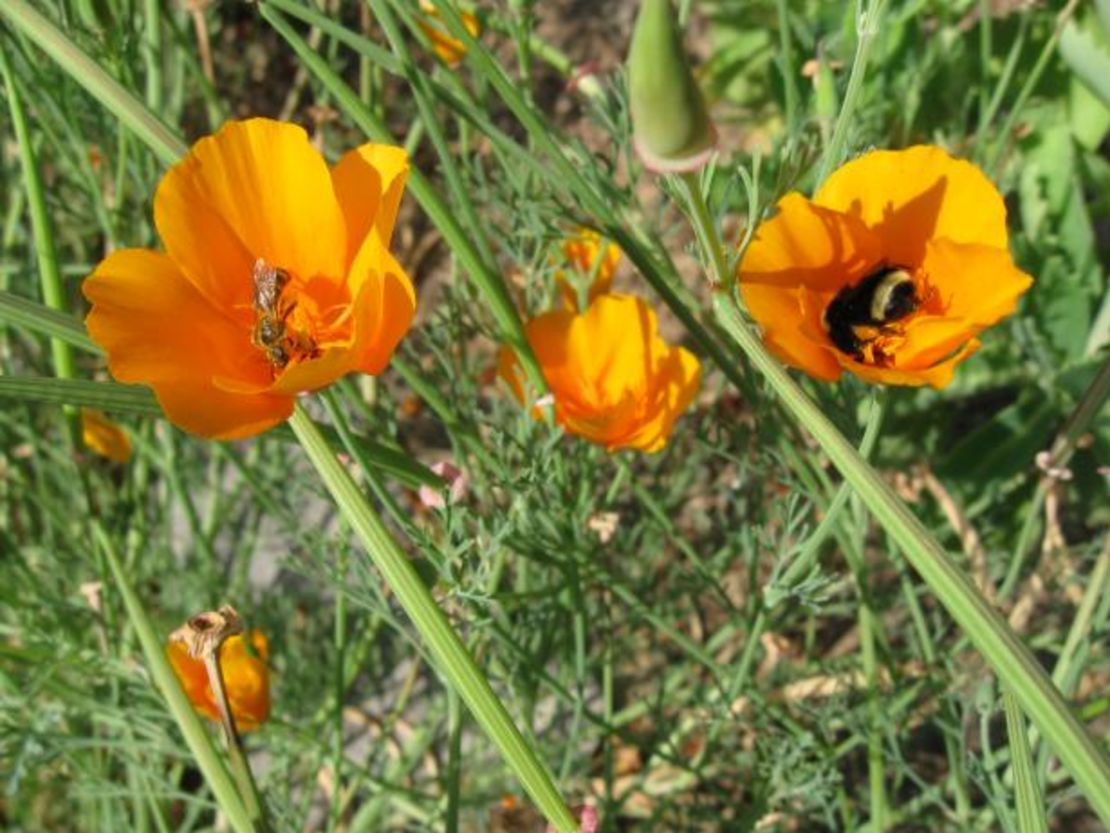
Understanding how and where bees live, feed and reproduce is key to supporting more biodiverse habitats. When learning about bee types, there are a few categorizations to be familiar with: native versus non-native, social versus solitary, and?specialist versus generalist.
Honeybees are non-native. The best way to support our ecosystems is through the protection of native insect species, which have evolved alongside native plants and serve keystone functions in our terrestrial ecosystems. Xerces Society’s?species profiles?provide further detail on native bee species at high risk.
Many types of native bees will visit your garden to gather pollen and nectar from plants such as these California poppies. The?bee on the left is a sweat bee (Halictus) and the one on the right is a yellow-faced bumblebee (Bombus vosnesenskii).
Specialist Bees Versus Generalist Bees
Since honeybees are highly social — living in densely populated hives with hierarchical structures — many assume that all bees live in cooperative arrangements. However, 90% of native bees are solitary — living and pollinating alone. Solitary bees are unlikely to sting, as most lack aggression and many lack stingers.
Some bees (generalists) pollinate a wide range of flowers; these bees tend to be found across broader geographic areas since they have more food options. Declines in generalist bee populations have sweeping negative impacts because they tend to span both farms and wild landscapes. Other bees (specialists) have evolved to pollinate a particular type of plant and exist only where said plants are found.?Specialist bees?may be more rare and at higher risk if their plant partners are geographically confined or suffering from the effects of climate change. Each type is an irreplaceable ecological puzzle piece.
Honeybees (Apis spp.)
Our storied, multigenerational bond with honeybees dates back to the?age of the pharaohs, when migratory beekeepers floated the Nile in search of bee colonies, collecting honey for embalming, preservation and sustenance. Similar stories of humans and honey span centuries and empires. No wonder honeybees are so central to our understanding of pollinators.
Honeybees fit the picture most people have in their head of bees. Their oval-shaped bodies have yellow-to-gold and brown-to-black bands. Most honeybees have a pollen basket, an arrangement of hairs on the back legs where pollen can be packed and carried efficiently to a hive or nest.
? Are honeybees native??No.
? Are honeybees pollinators??Yes.
? Where do honeybees live??Above-ground nests,?usually in the open.
Western honeybee (Apis mellifera)
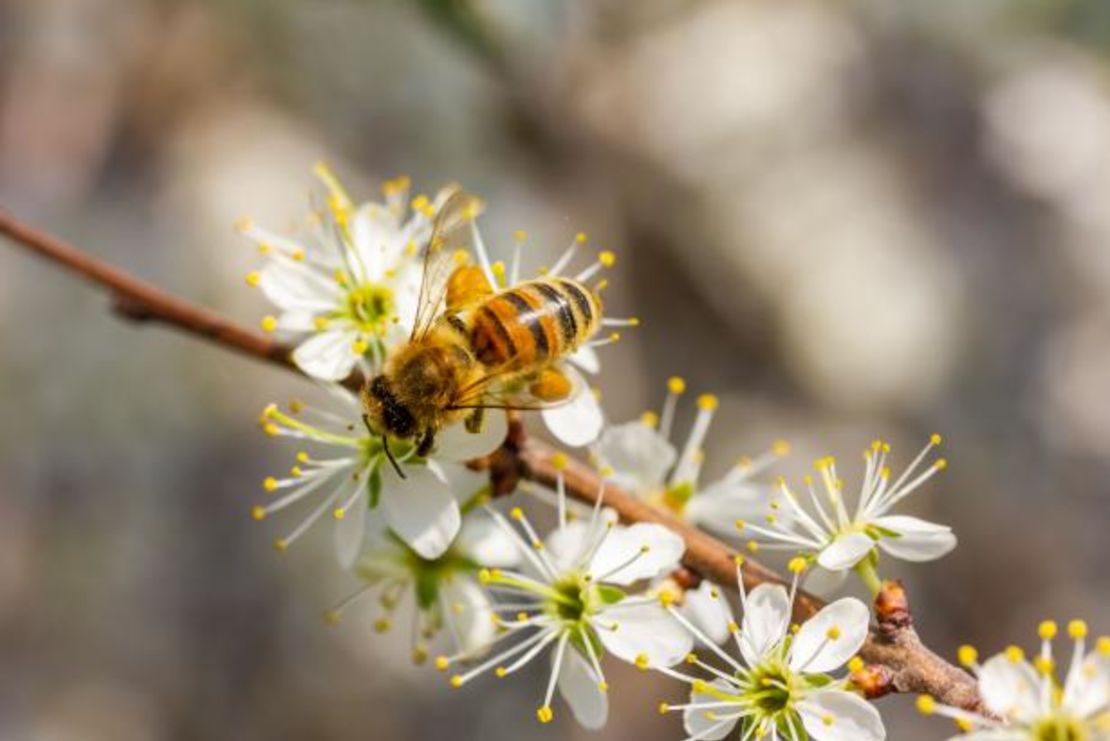
A honeybee visits the blossoms of a cherry tree in spring. Honeybees pollinate many fruit crops such as cherries, almonds and apples.
The Western honeybee came to the US from Europe in the 17th century. Six other?Apis?species exist in Southeast Asia, suggesting that’s where honeybees originated, according to?The Bee Book. Today, Western honeybees are found on every continent except Antarctica — a striking illustration of colonization.
Honeybees fly up to 40,000 miles to produce just one pound of honey. Each day, a worker can visit up to 2,000 different flowers, making them helpful pollinators across our landscape. Still, the pollination capacity of honeybees pales in comparison to their native counterparts.
Native Bees
In order to write a brighter story for our shared future, we must form closer bonds with pollinator species of all kinds — not just the honeybee. The following types of native bees are a great place to start when exploring how to comprehensively help our pollinators. After you’ve met these bees, do your own research to determine which species live in your area.
Bumblebee (Bombus spp.)
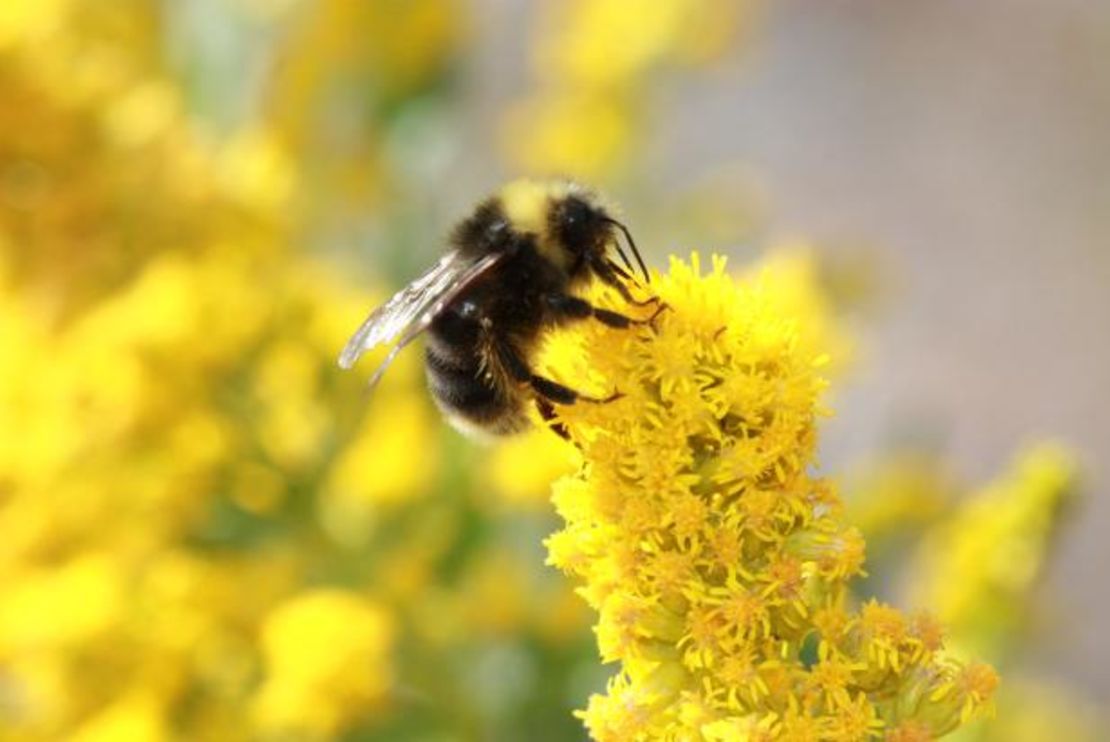
Bumblebees are easily recognizable with their round, striped and fuzzy bodies. Similar to honeybees, bumblebees are social insects. Xerces Society notes that more than 1/4 of American bumble bees are at risk of extinction. Explore?bumblebee species?in need of protection on Xerces’ website.
This is the Western bumblebee (Bombus occidentalis), whose current habitat?extends along the Pacific coast and western interior of North America, from Arizona, New Mexico and California, north through the Pacific Northwest and into Alaska.
Bumblebees can fly and pollinate in cooler, lower-light conditions than most other bees, making them critical, wide-spread pollinators — especially at higher latitudes and altitudes that other species can’t reach. Bumblebees practice “buzz pollination” by grabbing a flower in their jaws and vibrating their wings to release pollen. Buzz pollination is well-suited to a range of wildflowers and vegetable crops, like?tomatoes,?peppers?and cranberries. Learn more about finding and protecting these critical bees from the?Bumble Bee Specialist Group.
? Are bumblebees native??Yes.
? Are bumblebees pollinators??Yes.
? Where do bumblebees live??Below-ground nests, often in old rodent burrows.
Mason Bee (Osmia spp.)

Mason bees build mud walls inside their nests to create compartments for their young to grow. Different species vary in appearance, but many have metallic blue or green coloring. They most frequently nest in tunnels in the ground left by other burrowing insects or in the hollows of dead branches and reeds.?Bee “hotels”?are hospitable homes for mason bees since they are drawn to existing hollows. Once a nest is chosen, mason bees divide the space into chambers with mud walls; in each chamber, an egg is laid atop a blanket of pollen.
Mason bees nest in the hollow areas of branches, reeds and plant stems.
Mason bees are vital pollinators for commercial agriculture operations. They visit a wider range of flowers than honeybees, boosting their cross-pollination power. They have dense, hairy patches on their abdomens that grab pollen. They tend to drop pollen as they fly, so they pollinate prolifically (even if accidentally). Like bumblebees, mason bees can pollinate in lower temperatures, so they work over longer periods of time. Mason bees are valuable in commercial orchard operations; many growers introduce nest boxes in forage areas to boost wild populations, according to?The Bee Book.
? Are mason bees native??Yes.
? Are?mason bees?pollinators??Yes.
? Where do?mason bees?live??In the ground and in dead branches.
Leaf-Cutter Bee (Megachile spp.)

Like mason bees, leaf-cutter bees often nest in existing holes in stems as well as in trees and in the ground, and they may nest in bee blocks. According to?Utah State Extension, leaf cutters are critical pollinators of legumes like clover, lupine and alfalfa.
Leaf-cutter bees cut holes in leaves but rarely enough to do any damage to plants.
Female leaf cutters are identified by their slim, striped black bodies and pollen-covered underbodies. A telltale sign of leaf cutter bees in a landscape are the circular shapes they cut out of leaves to line their nest cavities. If you see these tidy half-moon chunks disappearing from leaves, don’t fret — leaf cutters don’t do enough damage to harm plants. Xerces Society notes that 50% of leaf-cutter bee species are at risk of endangerment.
? Are leaf cutter bees?native??Yes.
? Are?leaf cutter bees?pollinators??Yes.
? Where do?leaf cutter bees?live??In the ground and in tree stems.
Sweat Bee (Halictus spp.)
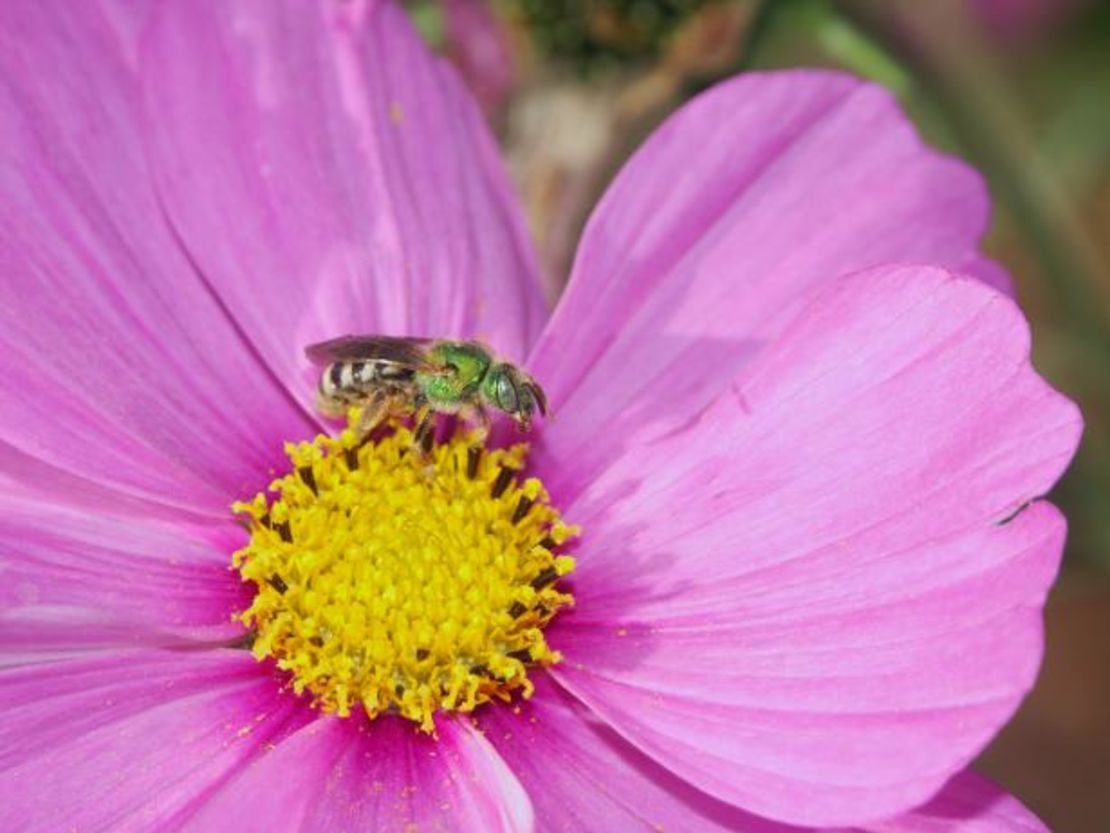
Sweat bees are attracted to our perspiration, ingesting the salty residue for a nutritional boost. Don’t be alarmed if you’re visited by these metallic green, black, blue or purple bees — they aren’t aggressive and will move along after their salt fix.
A Western sweat bee (Agapostemon) visits a pink cosmos bloom. These sweat bees are also known as metallic green sweat bees for their vibrant color.
Sweat bees are important pollinators of stone fruits, loquats, pears, wildflowers and field crops, according to the?University of Florida’s Extension blog. Also called halictid bees, they prefer to nest underground in bare soil exposed to warm sun. Above-ground nesting sites built with rotting wood may also attract sweat bees.
? Are sweat bees?native??Yes.
? Are?sweat bees?pollinators??Yes.
? Where do?sweat bees?live??In the ground.
Carpenter Bees (Xylocopa and Ceratina spp.)
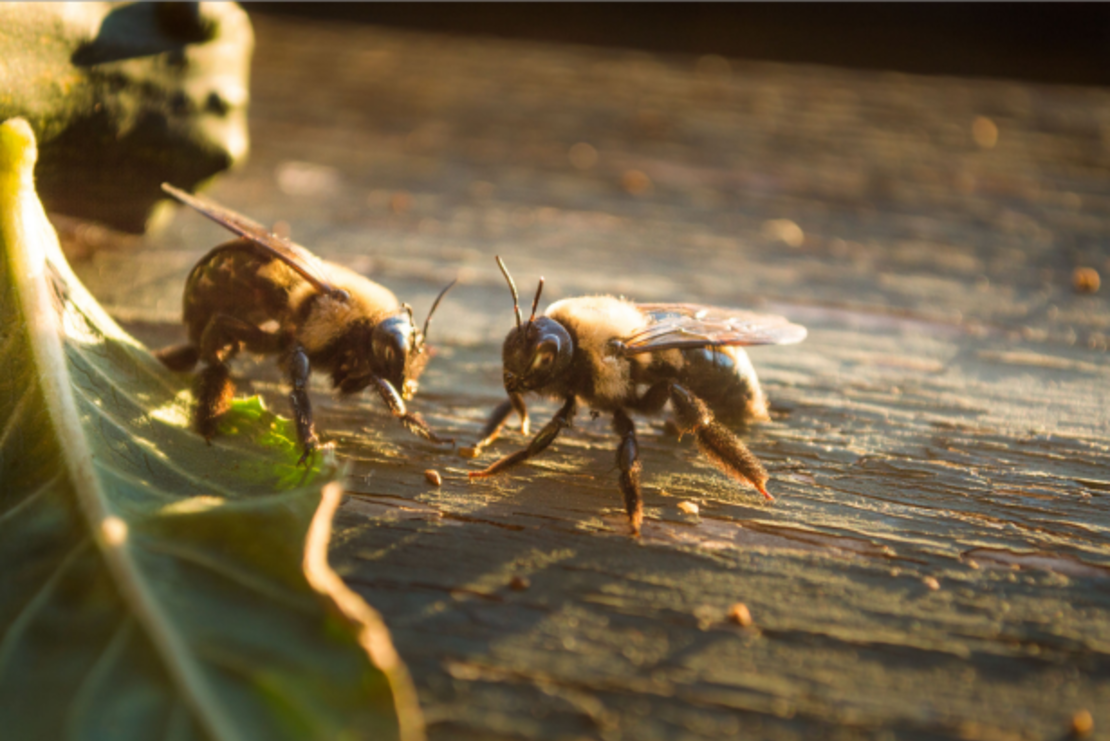
Carpenter bees are known for their powerful jaws that can chew straight through wood to build nests. Although carpenter bees are often seen as pests by homeowners, their nests tend to be close to the surface and are unlikely to cause structural damage.?Penn State Extension?recommends providing alternative wooden nesting sites and using building materials like composite that are resistant to damage.
Carpenter bees drill holes into wood surfaces to build their nests, so they’re often seen as a nuisance by homeowners. But they’re also valuable pollinators.
While they look similar to bumble bees,?Penn State Extension?notes that carpenters have shiny abdomens, while bumbles have fuzzy ones. According to?The Bee Book, daughters and mothers often nest and work together with loose-knit social ties. These bees are important pollinators of many agricultural crops and wildflowers, so it’s important to see them as guests rather than pests.
? Are carpenter?bees?native??Yes.
? Are?carpenter bees?pollinators??Yes.
? Where do?carpenter bees?live??In any type of wood.
Squash Bee (Peponapis spp.)
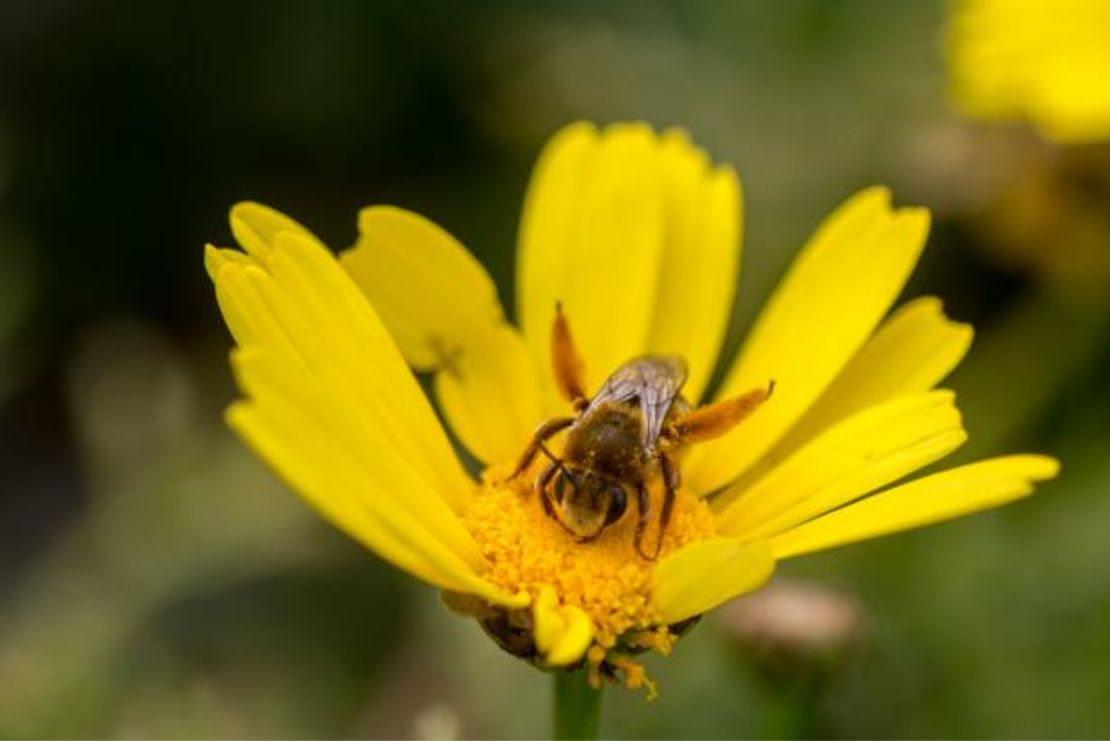
These specialist bees rely on squash,?pumpkins?and other members of the cucurbit family. Cucurbits have both male and female flowers, and pollen must be moved from a male to a female flower in order for fruit to form. Squash bees have evolved to meet these particular needs deftly. Because they only feed on cucurbits, rather than visiting a variety of flowers, squash bees pollinate cucurbits more efficiently and effectively than other bees.
Squash bees in the genus?Peponapis?are commonly referred to as the eastern cucurbit bee. They pollinate plants in the cucurbit family including squash, cucumbers, pumpkins and gourds. The bees will visit other plants to gather pollen, as this bee is doing, but feed their young pollen exclusively from cucurbits.
Squash bees look similar to honeybees; their abdominal stripes are lighter and more distinct, and they have combs on their hind legs for carrying pollen (rather than a honeybee’s basket).?Carolina Farm Stewardship Association?notes that, because squash bees nest in the soil, growers can encourage their presence by avoiding deep tillage. Also, letting marginal land near cultivated areas remain wild and undisturbed can help support these species’ nesting habits.
? Are squash?bees?native??Yes.
? Are?squash bees?pollinators??Yes (specific to Curcurbits).
? Where do?squash bees?live??In the ground.
Why Bees Matter
According to?Xerces Society,?around 85 percent of flowering plants need a pollinator to reproduce, including many food crops. The work of bees and other pollinators enables the production of around 1/3 of the food and beverages we consume. Without pollination by bees, the abundance of foods like blueberries, pumpkins, apples and almonds would be diminished. Without the pollination of clovers and other forage plants, the quality and abundance of dairy products would suffer. Wildlife rely on wild fruits, nuts and seeds that require pollination, and those species would struggle without bees. The same goes for the fiber crops that form our clothes, and the flowers that mark our seasons and grace our tables. For farmers, lower pollination has a sharp, negative impact on farm profitability, threatening their future livelihoods. Bees — especially native ones — fundamentally shape and support our fruitful and healthy lives.
Why Bees Are in Danger
Industrial development and climate change?have wreaked havoc on pollinator populations. Habitat loss and fragmentation, the pervasive use of pesticides, extreme weather and disease have all led to the decline of bees, butterflies and other pollinators.
Xerces Society notes?that honeybee hive losses have dramatically increased in the last decade; commercial beekeepers lose around 30% of their bees annually. Even more troubling patterns are being observed among native bee populations, with many species facing possible extinction. In 2017, the?rusty patched bumblebee?became the first bee on the endangered species list, joined by Hawaii’s?yellow faced bees. Without bold action to address root causes, bee populations will continue to decline.
How to Support Healthy Native Bee Populations

A front yard garden supports pollinators and other invertebrates by following methods outlined by The Xerces Society.
Supporting native bees starts with knowing what they need, and working to provide it in our yards, farms and gardens (even on tiny patios). The Xerces Society has a three-pronged approach to protecting and conserving native bee species: planting more flowers, creating nesting sites and reducing pesticide exposure. Try these strategies at home.
1. Plant More Flowers
One of the most effective actions we can take to save the bees is to plant more flowers — especially native plants, which have evolved alongside our bees and butterflies. Without abundant and diverse flower species to pollinate, native bees miss critical food sources. By planting native flowers everywhere — from farms to parks to patios to highway medians — we can support native bee species across the miles, ensuring they have sustenance at every turn.
The Xerces Society
A diverse mix of flowers, including flowers of native plants, encourages and supports bees and other pollinators.
Start by finding out?what flowering plants are native to your area. Each year, add a variety of these plants, even if you only have space for a container garden. If you have a larger space, implement strategies like cover cropping and beneficial hedgerows to boost pollinator forage. When selecting flowering plants, choose a mix of varieties with bloom times staggered across the season (for long-lasting pollen and nectar supply).
2. Create Nesting Sites
Habitat loss and fragmentation have drastically reduced the available space for bees to nest and reproduce, which makes it challenging for populations to thrive. There are several ways to help native bees nest successfully in your neighborhood.
For bees that nest underground, it’s important to keep some areas of soil bare, undisturbed and unmulched for easy access. Scout your area to make sure there are natural sites like hollow twigs or open tree cavities, and work to create substitutes if natural opportunities don’t exist. Bee blocks, hotels or nesting boxes are good alternatives if natural nesting sites are unavailable, especially for species who tend to nest in hollow stems or wood. Matthew Shepherd of Xerces noted that pruning can help, too; certain plants like sumac, elderberry and raspberry have hollow stems, which can make excellent natural nesting sites when their tubular centers are exposed by our pruners. Review?Xerces’ guide to creating nesting sites, with strategies for a range of bee preferences.
Water sources are nice to have but not critical, as bees get most of their water from nectar. However, adding a bird bath or small pond to your landscape is an excellent way to make sure no creatures go thirsty.
3. Reduce Pesticide and Herbicide Use
The spraying of synthetic chemical pesticides and herbicides is a leading cause of pollinator decline. This is especially true in large-scale farming operations, where chemicals are sprayed mechanically over large swaths of acreage. Particularly harmful is the spraying of these chemicals during warm, sunny hours when pollinators are most active.
We can help all bees by reducing our pesticide use. When possible, follow organic practices. Never apply pesticides or other chemicals for purely cosmetic purposes. If spraying is necessary for your particular circumstance, do so at dawn or dusk when pollinators are not active; avoid treating plants that are in bloom; always follow application instructions; and don’t spray on windy days, since this causes pesticide residue to drift.
In farm settings, physical barriers can be used to protect sprayed areas from pollinator forage areas.?Xerces recommends?a host of practices for working lands, including planting evergreen buffer zones between cultivated acreage and wildflower meadows to block key pollinator habitats from drift. From conventional to organic operations, and from tiny patios to large parks, every scale and use of land can positively impact pollinator health.
4. Bee Involved
As you explore ways to identify, invite and support diverse pollinators like native bees in your neighborhood, share your findings with your community. Post photos of your observations on social media. Propagate pollinator-friendly native plants to share with your neighbors and friends. If the idea of conserving native bees and other pollinators excites you, get involved with citizen science projects or legislative advocacy efforts. Here are some resources to get you started:
? Sign Xerces’?Pollinator Protection Pledge.
? Find and join a?community science project?like?Bumble Bee Watch.
? Learn more?through Bee City USA’s webinar library.
? Shop for?bee-safe plants?at your local garden center.
? Mow your lawn less, and participate in?No Mow May.
? Educate kids?about pollinators.
? Check out books like?Attracting Native Pollinators.
While the problem of declining bee populations is harrowing, individual and grassroots action matters deeply and the benefits of working on conservation projects can reach beyond the bees. Matthew Shepherd shared a moving story about the community of Talent, Oregon, which was devastated by the Almeda wildfire in 2020. Part of the community’s recovery strategy is native plant and?pollinator conservation. As residents began planting more native flowers and observing pollinator recovery after the fire, neighbors reconnected over this shared initiative and the hope it nurtured. Shepherd reflected on the conservation efforts, “It builds community between people, not just the bees.”

